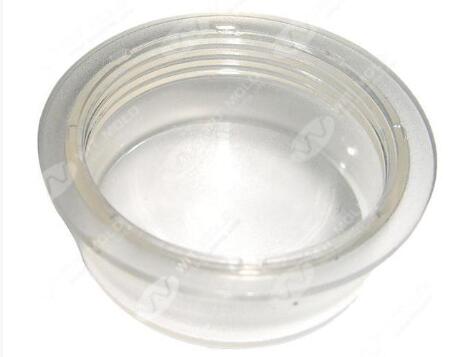FAQs Related to Unscrewing Mold
May. 12, 2025
What is an Unscrewing Mold?
Unscrewing molds are specialized types of injection molds designed to create threaded plastic components with precision. Unlike standard molds, these molds use rotation and movement to produce items with complex threading, commonly found in bottle caps, medical supplies, and automotive parts. Their unique mechanism provides efficiency, versatility, and precision, making them essential in various industries, from medicine to consumer goods.
How Does an Unscrewing Mold Work?
The unscrewing mold operates through a system that engages a threaded core within the mold.
Once the plastic is injected and solidified around the core, the mold’s unscrewing mechanism activates.
This mechanism, typically powered by hydraulic cylinders, motors, or gears, rotates the core to gently release the component.
The part is unscrewed carefully, allowing it to maintain its detailed threads without deformation or damage, which is crucial for its function in various applications.
Imagine trying to remove a bottle cap by simply pulling it off—it wouldn’t work because of the threads.
In a similar way, unscrewing molds rotate the component out of the mold, mimicking the way you would twist a cap to remove it.
This specialized approach ensures that every part meets the quality and functionality standards needed for its purpose.
What Are the Different Types of Unscrewing Molds?
1. Hydraulic Unscrewing Molds
Hydraulic unscrewing molds operate through hydraulic circuits that drive the rotation and ejection of the mold’s core.
This setup usually involves two hydraulic circuits: one powers the hydraulic cylinder, which turns the threaded core, while the other operates the ejection system that pushes the part out of the mold once it’s unscrewed.
The hydraulic system’s reliability and force make it ideal for producing parts that require a robust unscrewing action.
Pros:
Powerful and Reliable: Hydraulic systems are known for their strength, making them suitable for high-force applications.
Efficient for High Volume: They can handle large production runs without sacrificing performance.
Suitable for Larger Parts: Ideal for parts that need more force to unscrew due to size or complexity.
Common Applications:
Hydraulic unscrewing molds are popular in industries that demand high-volume production of threaded parts, such as automotive parts, medical supplies, and larger bottle caps. Their strong hydraulic action ensures consistent, precise results even in continuous operations.
2. Servo-Driven Unscrewing Molds
Servo-driven unscrewing molds use an electric motor and a closed-loop control system to achieve high precision in both the rotation and ejection of the threaded core.
The motor drives a gearbox that, in turn, rotates the core, while sensors continuously monitor the position and speed to ensure accuracy.
This setup allows for intricate, finely detailed designs, as the servo motor provides precise control over each movement.
Pros:
High Precision: Ideal for products with intricate or detailed threads, thanks to the closed-loop system.
Versatility for Complex Designs: Allows manufacturers to create complex patterns and exact tolerances.
Energy-Efficient: Typically more energy-efficient than hydraulic systems.
Common Applications:
Servo-driven unscrewing molds are often used for medical devices, cosmetic packaging, and fine-threaded consumer products.
Their precision is invaluable in industries where even the smallest deviation in thread quality can impact product performance or safety.
3. Mechanical Unscrewing Molds
Mechanical unscrewing molds utilize a cam or gear system to rotate the core and release the part.
This system can be powered by a motor or even a hand crank for simpler applications.
As the core rotates, it unscrews from the threaded component, allowing for straightforward and cost-effective operation.
Although less complex than hydraulic or servo-driven molds, mechanical molds are reliable and effective for products that don’t need extreme precision.
Pros:
Cost-Effective: Mechanical molds are generally more affordable to produce and maintain.
Simple Operation: Requires minimal setup and fewer components than other types.
Low Maintenance: Ideal for straightforward applications where high precision isn’t necessary.
Common Applications:
Mechanical unscrewing molds are well-suited for basic designs with fewer threads, such as consumer goods, small caps, and certain automotive components.
They’re a great choice for manufacturers looking to balance cost with functionality.
How to Choose the Right Unscrewing Mold Type
Each unscrewing mold type has unique strengths that cater to different needs.
Hydraulic molds excel in high-volume and force-demanding applications, servo-driven molds offer unmatched precision for intricate parts, and mechanical molds provide a budget-friendly solution for simpler designs.
The choice ultimately depends on your product’s design complexity, production volume, and budget requirements, but knowing the strengths of each mold type will help you make the best decision
Is it OK to Scrape Off Mold?
According to food safety experts, whether it’s safe to scrape off mold depends on its color. If the mold is pale blue or white, it may be safe to scrape off on some foods. However, black, green, yellow, or orange molds can produce toxins and should prompt discarding the entire product.
Is it OK to Cut Off Mold?
Yes, on firm fruits and vegetables with low moisture, small mold spots can be removed by cutting off at least 1 inch around and below the mold. Ensure the knife doesn’t contact mold directly to avoid cross-contamination. Dense foods limit mold’s penetration, making this safe for certain foods only.
What is it Called When Mold is Removed?
Mold removal is known as mold remediation. Mold remediation addresses the source of mold, reduces mold levels to safe levels, and treats affected areas to prevent spread. This approach includes moisture control and tackles underlying issues, unlike mold removal, which is typically a surface-level solution.
What is the Difference Between Mold Removal and Mold Remediation?
Mold removal is a temporary solution that eliminates visible mold on surfaces. In contrast, mold remediation is a comprehensive process that identifies and addresses the root cause, often moisture, and aims to maintain mold at safe, natural levels. Mold remediation is more effective for preventing future growth and addressing health-related concerns.
13
0
0


Comments
All Comments (0)